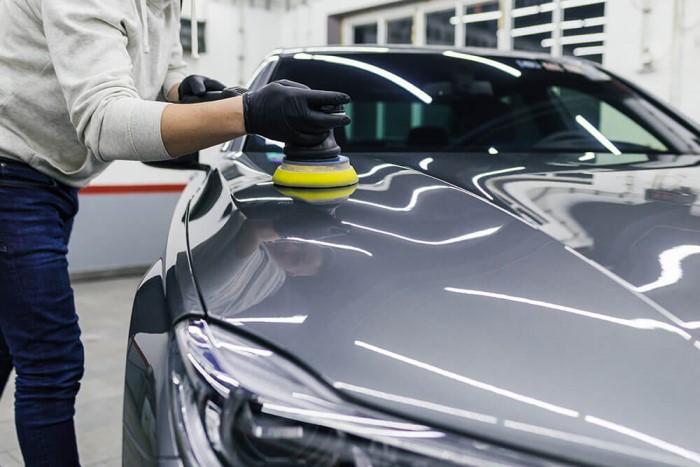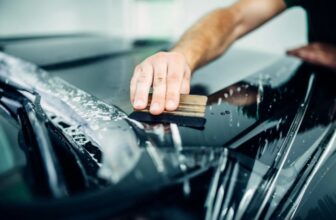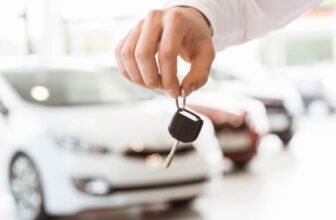
What is auto Body Repairing?
Auto body repairing is the process of restoring a damaged vehicle to its original condition through various techniques such as straightening bent metal, filling dents, and repainting. This type of repair is necessary after a collision or other type of impact that affects the body of a vehicle. The goal is to restore the vehicle’s appearance and structural integrity to ensure it functions safely and properly on the road.
Why is auto body repair important?
Auto body repair is important for several reasons:
- Safety: Damaged vehicles can compromise the structural integrity of a car, making it more vulnerable to further damage and increasing the risk of injury in the event of another collision. Auto body repair helps to restore the vehicle’s original safety features.
- Aesthetics: Auto body damage can impact the appearance of a vehicle and lower its value. Auto body repair helps to restore the vehicle’s original appearance, making it look like new again.
- Functionality: Collisions or other impacts can disrupt the normal functioning of various vehicle systems, such as the doors, windows, and electrical components. Auto body repair helps to restore these systems to proper working order.
- Resale value: A vehicle that has been properly repaired after an accident is more likely to retain its resale value compared to a vehicle that has not been repaired or has been poorly repaired.
Overall, auto body repair is an important process for maintaining the safety, appearance, functionality, and value of a vehicle.
Body shop repair process
The auto body repair process typically involves the following steps:
- Assessment: A professional auto body technician will assess the damage to the vehicle and determine the necessary repairs.
- Estimate: Based on the assessment, the technician will provide an estimate for the cost of the repairs.
- Disassembly: The damaged parts of the vehicle may need to be removed for repair or replacement.
- Repair: The technician will perform the necessary repairs, such as straightening bent metal, filling dents, and replacing damaged parts.
- Painting: If necessary, the repaired areas of the vehicle will be primed and painted to match the original color of the vehicle.
- Reassembly: The repaired parts will be reattached to the vehicle, and any missing or broken parts will be replaced.
- Quality control: The technician will conduct a thorough inspection of the repaired areas to ensure they meet the required standards.
- Delivery: The repaired vehicle will be cleaned and detailed, and then returned to the owner.
Note: The exact steps of the auto body repair process may vary depending on the extent of the damage and the specific needs of the vehicle.
What is a collision repair and refinishing?
Collision repair and refinishing are two important components of the auto body repair process.
Collision repair refers to the process of repairing structural damage to a vehicle after a collision or impact. This type of repair may involve straightening bent metal, replacing damaged parts, and restoring the vehicle’s original shape and alignment. The goal of collision repair is to return the vehicle to its pre-accident condition and ensure its structural integrity and safety.
Refinishing refers to the process of restoring the vehicle’s appearance, typically through painting and/or bodywork. This process may involve sanding and priming the damaged areas, matching the color of the existing paint, and applying a new layer of paint to the repaired areas. The goal of refinishing is to make the vehicle look as good as new and restore its original appearance.
Together, collision repair and refinishing are important components of the auto body repair process that help to restore the safety, functionality, and appearance of a damaged vehicle.
Different collision repair operations
Collision repair operations typically include the following:
- Frame straightening: This involves using specialized equipment to straighten bent or twisted metal frames and restore the vehicle’s original shape and alignment.
- Panel replacement: This involves removing and replacing damaged or destroyed body panels, such as doors, fenders, and hoods, with new or refurbished parts.
- Dent repair: This involves removing dents from the body of the vehicle, either through traditional metalworking techniques or through the use of specialized tools such as a paintless dent repair system.
- Welding: This involves welding broken or damaged metal components back together, such as parts of the frame or body panels.
- Painting: This involves priming and painting the repaired areas of the vehicle to match the original color and finish.
- Glass repair: This involves repairing or replacing damaged or broken windshields and windows.
- Electrical repair: This involves repairing or replacing damaged electrical components, such as lighting fixtures and wiring, that may have been affected by the collision.
- Mechanical repair: This involves repairing or replacing mechanical components, such as engines, transmissions, and suspension systems, that may have been damaged in the collision.
The specific collision repair operations required will depend on the extent and type of damage to the vehicle, as well as its make and model.
Auto Body Repair Cost
The cost of auto body repair can vary greatly depending on several factors, including:
- The extent of the damage: The more extensive the damage, the more expensive the repairs will be.
- Type of repair: Different types of repairs, such as frame straightening or panel replacement, may have different costs associated with them.
- Labor costs: The hourly labor rate charged by the auto body repair shop will impact the overall cost of the repairs.
- Parts costs: The cost of the replacement parts needed for the repair will also impact the overall cost.
- Location: The cost of auto body repair can vary by region and by the cost of living in a particular area.
- Make and model of the vehicle: Certain makes and models may require more specialized or expensive parts, which can increase the cost of the repairs.
On average, the cost of auto body repair can range from a few hundred to several thousand dollars, depending on the factors listed above. It is always best to get multiple estimates from different auto body repair shops like CLINE to get an idea of the cost of the repairs. It’s also important to keep in mind that the cheapest estimate may not always be the best option, as the quality of the repairs is also an important consideration.
Choosing an Auto Body Shop
An auto body shop, also known as a collision repair center or a car body shop, is a business that specializes in repairing and restoring damaged vehicles. Auto body shops provide services for vehicles that have been damaged in collisions, as well as for vehicles that have been damaged by other means, such as hail, fire, or flood.
Auto body shops typically offer a range of services, including collision repair, auto body painting, glass repair, and mechanical repairs. They may also offer additional services, such as detailing and customizing, to help enhance the appearance and functionality of the vehicle.
The technicians at an auto body shop are trained in various aspects of auto body repair and refinishing, including metalworking, painting, and welding. They use specialized tools and equipment to repair and restore vehicles to their pre-accident condition.
When choosing an auto body shop, it’s important to look for one that has a good reputation for quality work, fair prices, and good customer service. You can also check for certifications from organizations such as the National Institute for Automotive Service Excellence (ASE) to ensure that the technicians are trained and qualified to perform auto body repairs.
Conclusion
Auto body repair is an important aspect of maintaining and restoring the safety, functionality, and appearance of vehicles that have been damaged. The process of auto body repair can involve a range of operations, including frame straightening, panel replacement, dent repair, welding, painting, glass repair, electrical repair, and mechanical repair.
The cost of auto body repair can vary depending on several factors, including the extent of damage, type of repair, labor costs, parts costs, location, and make and model of the vehicle. Auto body shops, also known as collision repair centers or car body shops, are businesses that specialize in repairing and restoring damaged vehicles.
When choosing an auto body shop, it’s important to look for one with a good reputation for quality work, fair prices, and good customer service, and to check for certifications from organizations such as the National Institute for Automotive Service Excellence (ASE) to ensure that the technicians are trained and qualified to perform auto body repairs.




